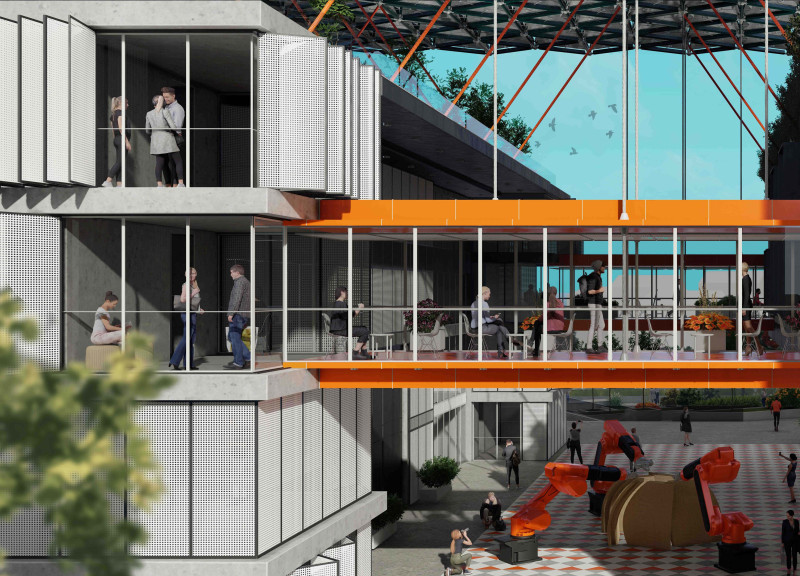5 key facts about this project
### Overview
Located in [Location], the research institute focuses on advanced construction technologies with an emphasis on sustainable practices and community engagement. The design aims to serve as both a functional space for innovative research and a reflection of the surrounding urban environment, promoting environmental sensitivity through thoughtful architectural choices.
### Spatial Strategy
The layout of the building is conceived as a flexible "workhub," integrating various functions such as workshops, classrooms, and collaborative spaces. This multifaceted design encourages interaction among users, facilitating creative exchanges across different disciplines. Communal areas are strategically distributed to foster a sense of community while enhancing user experience.
### Materiality and Sustainability
The project utilizes a range of materials aligned with its sustainability objectives. Reinforced concrete forms the building's primary structure, ensuring durability, while steel frames provide flexibility and robustness in the roof design. Triangular and hexagonal girders enhance environmental resilience, complemented by polycarbonate panels that allow natural light penetration while minimizing thermal gain. Interior finishes include sustainable timber and recycled steel, promoting a connection to nature and reducing the overall environmental impact. Additionally, features such as green roof systems contribute to insulation and managing rainwater, integrating the structure into its ecological context.
### Design Performance
Energy efficiency is a cornerstone of the building's design, with integrated systems such as solar panels and wind turbines poised to generate more energy than consumed. The communal spaces are thoughtfully arranged to facilitate interactions and shared learning experiences, reinforcing the project's commitment to collaboration. Through innovative construction methods and material choices, the design minimizes the carbon footprint throughout both construction and operation phases.



















































